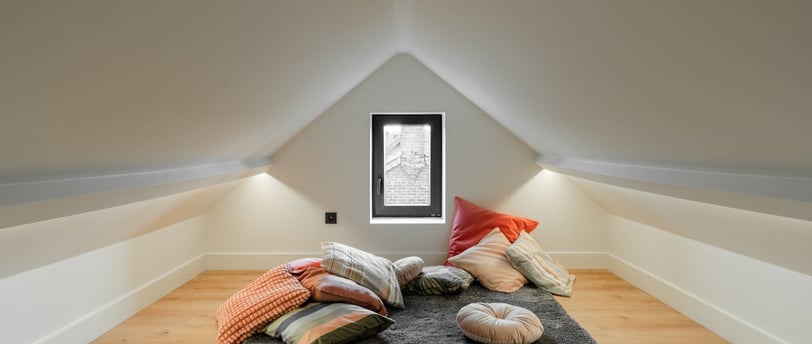Loft Conversion Council Approval UK 2025: Planning Permission & Design Ideas
5/21/20253 min read


Thinking about converting your loft in 2025? Whether it’s an elegant master suite or a bright home office, a loft conversion can transform your property. But before you break out the paint samples and floorplans, there’s one crucial step: getting your loft conversion approved by your local council.
In this post, we’ll walk you through the planning permission process, explain how building regulations apply, and share inspiring loft design ideas to get your creativity flowing—all tailored for UK homeowners.
Do You Need Planning Permission for a Loft Conversion?
In Many Cases, No—Thanks to Permitted Development Rights (PDR)
Most loft conversions in the UK do not require full planning permission. If your project meets specific limits and conditions, it can fall under Permitted Development Rights (PDR).
Key Conditions for Loft PDR (as of 2025):
Maximum volume:
40m³ for terraced houses
50m³ for semi-detached and detached homes
The extension doesn’t exceed the plane of the existing roof slope (facing the street)
Materials must be similar in appearance to the existing house
No raised platforms or balconies
The conversion does not overhang the outer wall
Side-facing windows must be obscure-glazed and non-opening below 1.7m from floor level
Note: Flats, maisonettes, and properties in conservation areas or national parks do not benefit from PDR—you’ll need to apply for planning permission.
When Do You Need Full Planning Permission?
You must apply if:
Your home is listed or in a conservation area
The roof extension alters the shape or height of the structure facing the main road
You want to include a balcony or veranda
The conversion exceeds the volume limits
You're creating a self-contained flat (Airbnb unit or rental)
To be safe, always check with your local planning authority or use the UK Planning Portal.
Building Regulations—Always Required
Even if you don’t need planning permission, your loft conversion must meet UK Building Regulations. These regulations ensure your conversion is safe, structurally sound, and energy-efficient.
Areas Building Control will assess:
Structural strength of the floor
Fire safety (smoke alarms, escape routes, fire doors)
Staircase design
Insulation and ventilation
Soundproofing between floors
📌 Pro tip: Hire an architect or loft specialist who can prepare plans for building regulations approval and liaise with your local council.
Step-by-Step Process in the UK (2025):
Get a feasibility survey from a loft conversion specialist or architect
Draw up professional plans
Apply for a Lawful Development Certificate (LDC) if using Permitted Development
Submit a planning application if your project falls outside PDR
Submit Building Regulations application (either Full Plans or Building Notice route)
Receive site visits and inspections during and after construction
Obtain a Completion Certificate—this is vital for future property sales
Design Ideas to Inspire Your Approved Loft Conversion
Once you’ve ticked the legal boxes, the fun part begins: designing your dream loft space. Here are some of the top ideas UK homeowners are embracing in 2025:
1. Master Bedroom with Dormer
A dormer loft extension adds floor space and head height, perfect for a luxury bedroom with an en-suite.
Add floor-to-ceiling windows for light and views
Use built-in wardrobes to maximise space
2. Home Office in the Eaves
Convert a small loft into a peaceful work zone.
Fit Velux skylights for natural light
Choose light colours and minimalist décor
Add bespoke shelving under sloped ceilings
3. Entertainment Room or Chill-Out Space
Create a modern cinema room or gaming den.
Soundproof walls and floors
Soft LED lighting and acoustic panels
Wall-mounted projector or screen
4. Yoga and Wellness Loft
A tranquil studio above the hustle of the home.
Bamboo flooring or soft mats
Air-purifying plants and blackout blinds
Add a small en-suite shower for post-workout refreshment
Final Thoughts: Plan Smart, Build Safe, Live Big
A loft conversion is one of the most valuable upgrades you can make to a UK home—but it all starts with getting approval from your local council and ensuring compliance with building regulations.
With the right guidance and design inspiration, your dream space is just a staircase away.
Before starting your project in 2025, take the time to:
Check your planning requirements
Hire a reputable designer and builder
Apply for the right permissions early
Stay inspired with functional, future-ready loft ideas